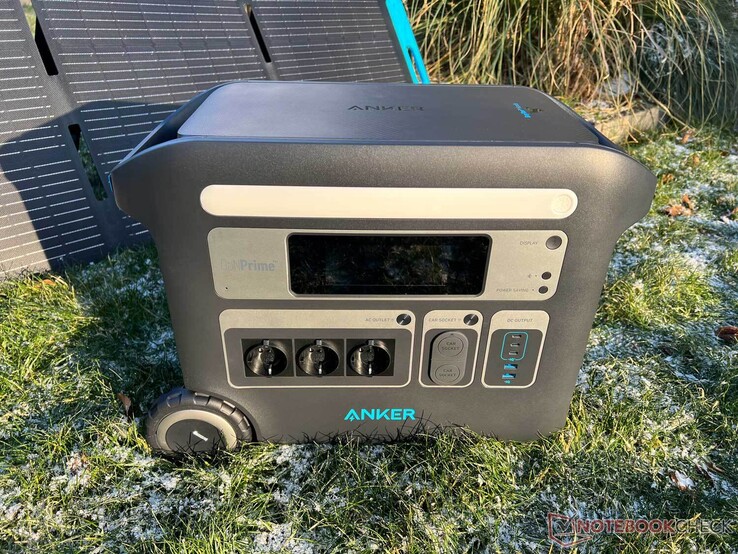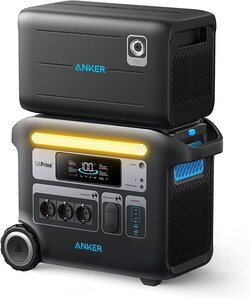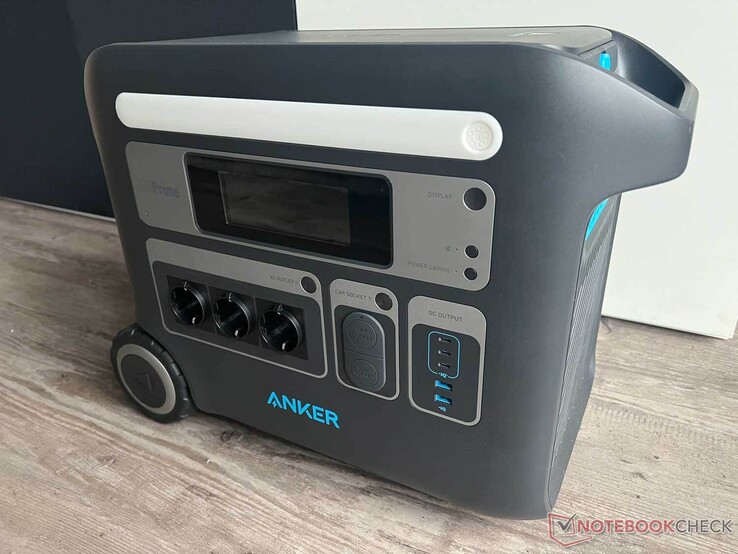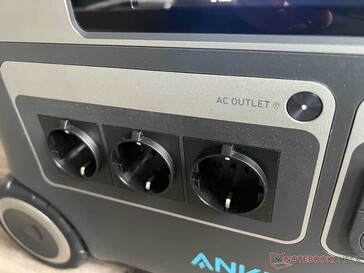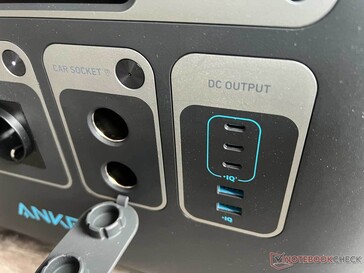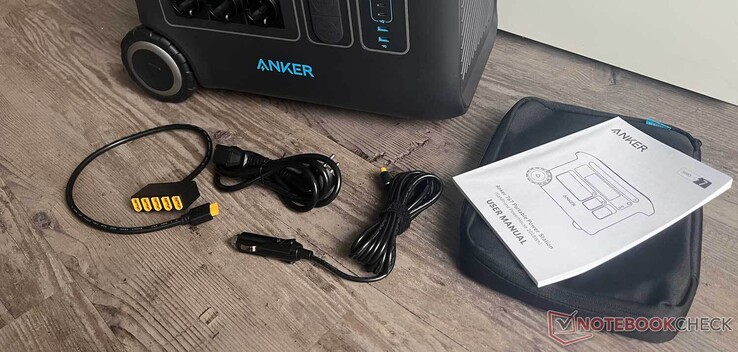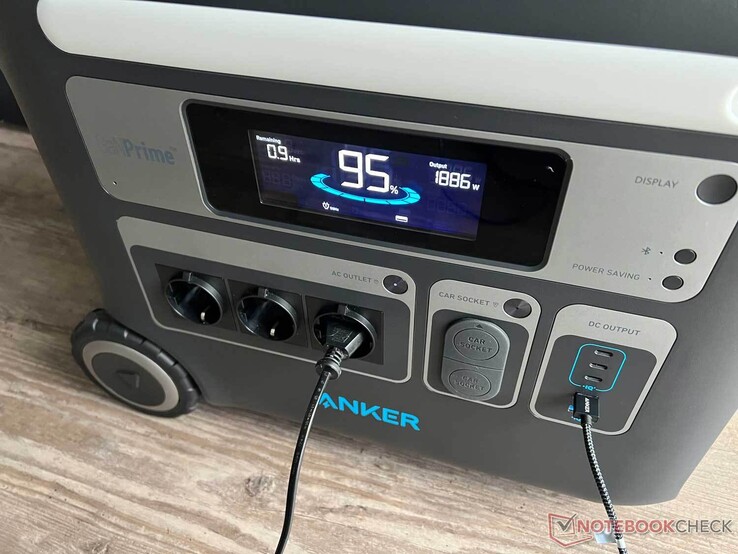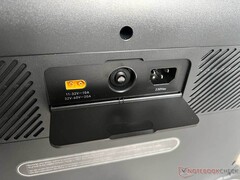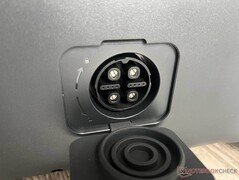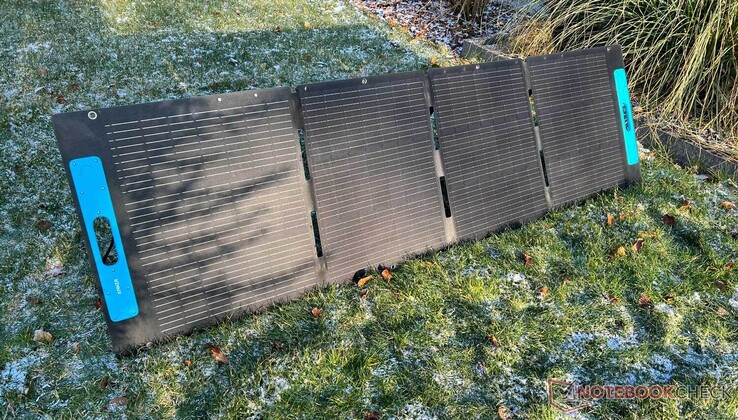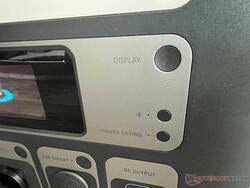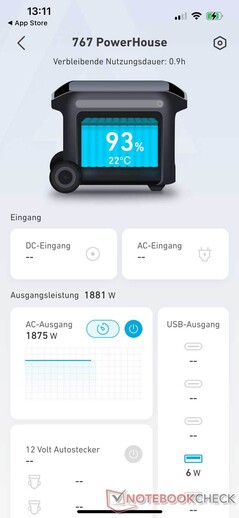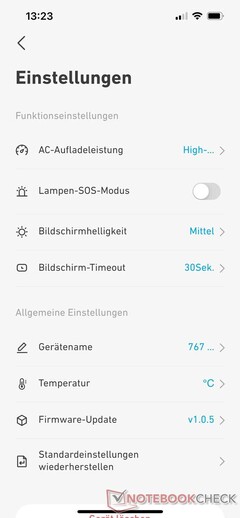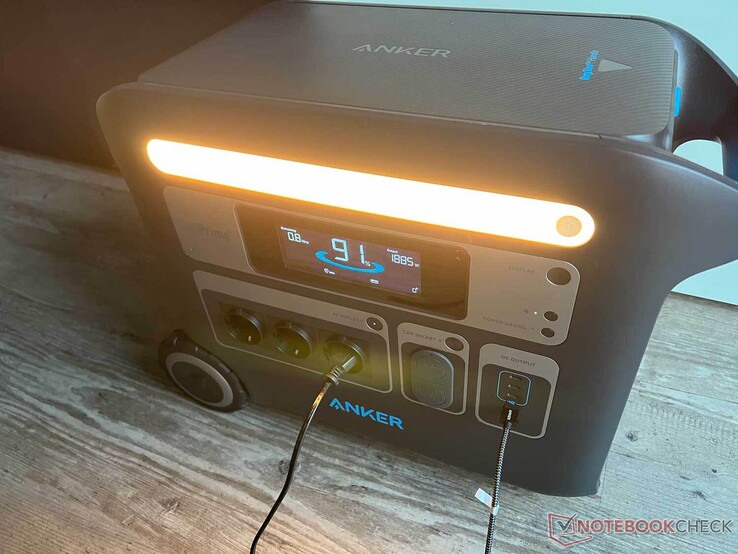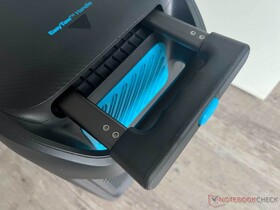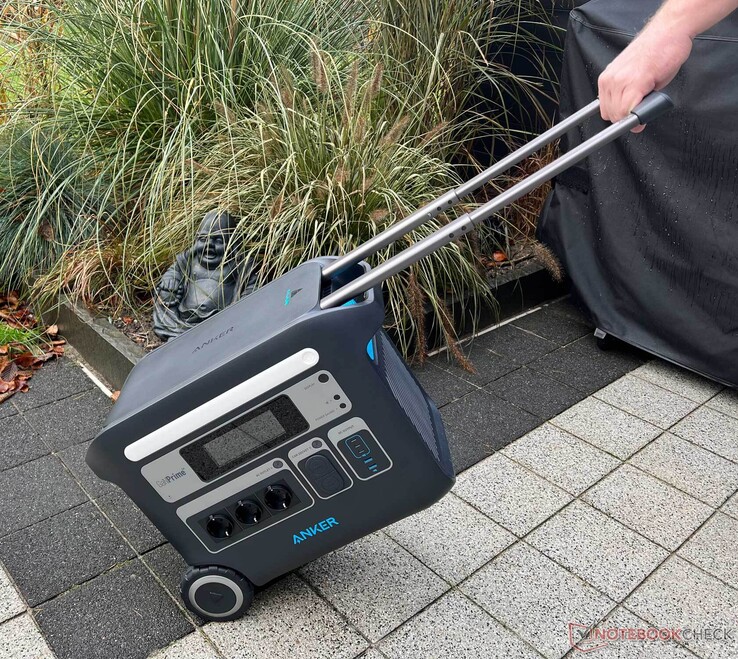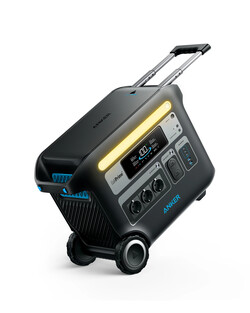Anker PowerHouse 767 in practice test: Powerstation flagship is still a mobile powerhouse
Power stations have long been familiar to campers and outdoor enthusiasts as a mobile power source. In recent months, however, they have arrived in many more households, not least due to the energy crisis, to prepare for power outages as a blackout precaution or to save energy costs via solar. In addition to established providers like EcoFlow and Bluetti, the well-known manufacturer Anker has also been offering the mobile power packs for some time.
After we recently presented the largest model to date the Anker 757 (approx. 1,700 Euros/~$1837 at Amazon), we will now review the new Anker PowerHouse 767, the brand's new and strongest power station, which is Anker's flagship power station. The device not only offers massive power, but also weighs quite a bit. However, it is still mobile thanks to the practical trolley function. Our review reveals how the Anker 767 Powerstation performed in practice.
Overview: The features of the Anker PowerHouse 767
The Anker PowerHouse 767 is a power station with a battery capacity of 2,048 Wh, or 2 kWh. The energy is stored in LiFePO4 battery cells. These are known to be particularly durable. The manufacturer promises safety and reliability for 3,000 charging cycles and 10 years of service life, and also gives a 5-year manufacturer's warranty.
If the battery capacity is not enough for you, you can double it. For this purpose, the manufacturer offers the additional battery Anker 760 (single approx. 1,700 Euros/~$1837 at Amazon, in a bundle approx. 4,000 Euros/~$4323 at Amazon) with another 2,048 Wh, which finds a place on the top of the power station.
In addition to the high capacity, the Anker 767 Powerstation is characterized by its continuous power of 2,300 W. This means that many devices can be supplied with power for work and leisure - from notebooks to chainsaws. Anker does not have a buffer for short-term power peaks, as other manufacturers often specify.
Three earthed sockets with 230 V and up to 2300 W, two car sockets (cigarette lighter) with 12 V and 10 A (120 W), three USB-C ports with up to 100 W Power Delivery and two USB-A with up to 12 W are available as connections on the device. Too bad: Unlike the cigarette lighters and the charging ports, the sockets are not protected with a rubber cap or flap.
It's all packaged in a shock-resistant, but unfortunately not rain-protected unibody design with a clever mobility solution. In addition to the power station, an AC charging cable, a car charging cable, a solar charging connector (with five XT60 ports for up to five solar panels) and an accessory bag as well as a user manual are included.
Anker PowerHouse 767 in comparison
Before we put the power station to the test in the following sections, first a short comparison of the most important data of the Anker 767 with the smaller Anker 757 and the Bluetti AC200Max, which is also equipped with 2,048 Wh (approx. 2,400 Euro/~$2594 at Amazon).
| Specs | Anker 767 | Anker 757 | Bluetti AC200Max |
|---|---|---|---|
| Capacity | 2,048Wh | 1,229 Wh | 2,048 Wh |
| Continuous power | 2,300 W | 1,500 W | 2,200 W |
| Charging power AC | 2,200 W | 1,000 W | 800 W |
| Charging power DC (solar) | 1,000 W (11 - 32 V, 10 A; 32 - 60V, 20A) |
300 W (11 - 30 V, 10 A) |
900 W (10-145 V, 15.2 A) |
| Connections | 3 AC, 3 USB-A, 2 USB-C, 2 car | 2 AC, 4 USB-A, 2 USB-C, 1 car | 4 AC, 4 USB-A, 1 USB-C, 1 car, 3 DC, 2 wireless charging pads |
| Accessories | 3 charging cables (1x AC, 1x car, 1x solar), manual | 3 charging cables (1x AC, 1x car, 1x solar), manual | Power supply, PV cable, car cable, adapter, manual |
| Weight | 30.5 kg | 20 kg | 28 kg |
| Dimensions | 525 x 250 x 395 mm | 463 x 288 x 237 mm | 420 x 280 x 386.5 mm |
| Carrying | Wheels + telescopic handle, 2 carrying handles | 2 carrying handles | 2 carrying handles |
| Warranty | 5 years | 5 years | 4 years |
Outputs: Full power and ten connections
The promised over 2,000 watts were delivered by the power station without any problems in the long run, but this drains the battery in less than an hour. In most cases, one or more weaker loads will probably be connected.
In our practical test, we were able to draw around 1,800 Wh from the batteries via the 230-volt socket at a continuous load of around 250 watts before they were drained after a good 7 hours. This corresponds to about 88 percent of the battery's nominal capacity, which is a more than solid value in relation to some other competing products. The GaN technology with its high efficiency is noticeable here.
As a power source for my work setting with a desktop PC and four 32-inch 4K screens, which together have a power hunger of around 300 W, a good 5 hours of work time was possible before the battery only displayed a few percent remaining charge. On the other hand, users who are only on the go with a notebook should easily be able to work for more than a working week on the go depending on the consumption and load of the device. With an average consumption of 30 W, which is already quite high for most laptops and activities, the runtime is around 60 hours. In idle mode at an average of 6 W, the device would run for around 300 hours.
The UPS function is practical when working with the power station. In case of a power failure, the device can be used as an uninterruptible power supply and takes over the supply with a switching time of less than 20 ms. That should be long enough for many devices to ensure continuous operation, and it worked reliably in the test.
Inputs: Anker PowerHouse 767 charges in one and a half hours in the test
Where power comes out, energy has to go in first. The power station can only supply external devices with power via the built-in inverter and USB when the 2,048 Wh battery is charged. The charging ports are all on the back of the device.
The easiest and fastest way to charge the Anker 767 Powerstation is via a power outlet. Simply connect the included cable with an earthed plug on one side and an IEC plug on the other to the power station. Thus, up to 2,200 W charging speed is possible, but not all the time.
In the practical test, the charging speed varied depending on the battery capacity. While an almost empty battery charged with over 2,000 W in the test, it was only around 500 watts towards the end of the charging process. According to the meter, exactly 2,309 Wh flow into the battery, which results in an efficiency of just under 89 percent during charging.
.
The manufacturer itself promises that the Anker 767 Powerstation can be charged to 80 percent within one hour on the mains. This was successfully proven in our test. It is fully charged in just under one and a half hours, which is significantly faster than many competing products.
The high charging speed is a practical thing to get energy back into the batteries quickly. As an example, a camping trip can be mentioned here, where the power station can be fully charged again within a very short time at a power outlet. Alternatively, a car socket can also be used, but this naturally takes correspondingly longer.
Charging via solar panel(s) with up to 1,000 watts
The Anker PowerHouse 767 is also a solar generator. This means that it can also be charged via solar energy. The prerequisite for this is, of course, corresponding solar panels, which Anker optionally includes in the bundle of the power station - for an additional charge, of course. Thus, the Anker 767 Powerstation in a bundle with two 200-Watt panels costs about 3,700 Euros/~$3999 according to the MSRP (e.g. at Amazon).
An XT60 input is available for solar charging. Via this, the power station can be charged with up to 1,000 W (11 - 32 V, 10 A; 32 - 60V, 20A) via solar panels. This is significantly more than, for example, with the Anker 757 with 300 watts and thus allows a more rapid charging via the sun. In theory, under ideal conditions and with sufficient solar panels equipped with a cumulative 1,000 watts, the Powerstation should fully charge in only about 2.5 hours. In practice, however, this usually takes longer.
An Anker 531 solar panel (approx. 600 Euros at Amazon) was available for our test. In theory, it pumps new energy into battery with up to 200 Watts. However, in practice, it looked much bleaker in the end with less than 50 watts. That was however explicitly not due to the solar module, but simply the lack of sunshine and the low sun position here at the outskirts of Hamburg in the late autumn and winter. When the weather is suitable and the sun is higher in the coming year, we will post a small update on the Anker 531 solar panel here.
Alternatively, other solar panels can be connected to the PowerHouse 767 from Anker, e.g. the already tested Anker 625 (approx. 370 Euros/~$400 at Amazon) with 100 watts or from other manufacturers. It is important that the plug fits, whereby there are also different adapters.
Volume and operation: Not audible at low load
On a positive note, the power station was almost completely silent at low power output. Thus, it does not disturb, for example, when it is used as a power source for a mask in sleep apnea. Only at higher loads, starting at about 1,000 W, does the built-in fan make itself felt more or less regularly to remove the inverter's waste heat. However, since the devices in use usually create a certain amount of noise themselves, the background noise disturbance of the power station will vary accordingly.
Even when charging with around 2,000 W, the device is definitely not to be ignored and sounds with up to 55 decibels. If that bothers you, you can also activate silent charging via the settings in the app.
The operation of the device is kept simple and is done via a few buttons. There is no central on/off switch. The device is permanently on standby, but according to our experience, it hardly consumes any energy even when not used for a longer period of time. There is a button for activating the AC sockets on the top right. The same applies to the car sockets. If no consumer is connected for 15 minutes, the ports automatically turn off again to save power. The total of five USB ports, on the other hand, are activated automatically as soon as a consumer (e.g. a smartphone) is plugged in.
Three buttons to the right of the display round off the operating unit. They activate the screen for a short time as well as Bluetooth and the energy-saving function, which we will now discuss.
Other functions: Display, app function and flashlight on board
The color display without touch function is located on the front above the ports. This provides central information about the battery's charge status and not only shows it as a percentage, but also visually via an emptying bar.
The right side shows the current output and input power in watts on top of each other. On the left is the duration in hours, how long the device can still deliver energy at the current power or how long the charging process currently takes until the power station is full. Various icons at the bottom inform about further details and warn about too low or too high temperatures, among other things.
There is also an icon that informs about the Bluetooth connectivity. The Bluetooth button to the right of the display can be used to connect to the smartphone, which can then be used to control the power station remotely via the Anker app (iOS | Android ). This is possible for the first time in a device of this kind from Anker and is another indication of the premium segment. The initial setup is quick and well explained, but requires a short registration.
Setting up the Anker app (under iOS)
In general, the app is actually quite good and clearly arranged. Like the display, it provides real-time information about the DC input and AC output, and also breaks down the output power per port. This gives a good overview.
It also offers other options, such as activating an energy-saving mode and accessing the settings. Among other things, the screen's brightness and timeout duration can be changed there, as well as firmware updates (if available). The energy-saving mode ensures that all ports are turned off as soon as the respective device is fully charged.
In principle, the app connectivity is a fine thing. Unfortunately, the app and the power bank lose the connection when the smartphone is too far away or not used for a longer time. Then the Bluetooth button on the device has to be pressed again, so permanent remote control is not possible. On the other hand, this naturally saves power when Bluetooth is not transmitting all the time.
The large LED light bar above the display can also be turned on and off via the app, but of course also on the device. It offers three levels of dimmable light to connect and disconnect devices from the power station. And it can also serve as (emergency) lighting, e.g. in case of a power outage or when camping. This is practical, but not a special feature for power stations from Anker as well as some other manufacturers, but rather a practical additional benefit. If you press the button for the light for a longer time or use the corresponding function of the app, the power station can also send an "SOS" signal.
Mobility: Heavy, but still mobile
The Anker 767 is a real flagship power station. It weighs around 30.5 kg (~67 pounds) with dimensions of around 52.5 x 25 x 39.5 cm (~20.1 x 9.8 x 15.6 inches) in length, width and height. However, the powerhouse hardly weighs more than the Bluetti AC200Max with the same capacity and slightly lower power.
Lugging around a good 30 kg on the two handles on the left and right really requires some strength and is definitely not something you want to do for hours. But you don't have to either. Unlike many competing products with a similar weight, Anker integrates a practical trolley function. We only know this from a few other models, such as the Zendure Superbase Pro (approx. 2,200 Euros/~2378 at Amazon).
On one side, a long and sturdy handle can be pulled out to then comfortably drag the device behind you on its two rubber wheels. This makes transport significantly easier and much more pleasant than the trudging. And since Anker was clever enough to install reasonably sized 4.7-inch outdoor wheels, walking across a meadow or sandy path is not a big challenge either.
Also practical: The power station can not only be placed horizontally, but also upright thanks to "rubber bumpers" on the left handle. The display is then oriented vertically, but the device can be stored a bit more space-saving and the trolley handle is also easier to pull in and out.
Conclusion: Powerstation flagship Anker 767 convinces in the test
Anker's PowerStation flagship PowerHouse 767 is a real heavyweight. What would actually be a point of criticism in terms of weight hardly becomes a problem in everyday use due to the practical trolley mobility solution. In terms of performance data and capacity, however, it is a benefit.
With its good 2,000 Wh and 2,300 W, the Anker 767 offers enough capacity and power for many situations in life to supply all kinds of devices with a lot of power or over a long period of time.
Among other things, the device collects plus points with the high charging speed at the socket as well as sufficient input power via solar (if the weather plays along). In addition, there are many ports and a high efficiency when retrieving the stored energy.
In addition to the aforementioned wheels and extendable handle, the integrated light and the app connectivity, which is unfortunately not free of criticism, were also appealing in the test. In addition, the device has a high-quality build and makes a stable impression.
If you are looking for a powerful and versatile power station as a blackout precaution or for camping and the like, you will not go wrong with the Anker PowerHouse 767 according to our impressions, but you will have to pay a few dollars for it...
Price and availability
The Anker PowerHouse 767 is available for a recommended retail price of just under 2,700 Euros/~2918, among others, at Amazon and directly from the manufacturer.
Note: The Anker PowerHouse 767 Powerstation was provided by the manufacturer for the test.


